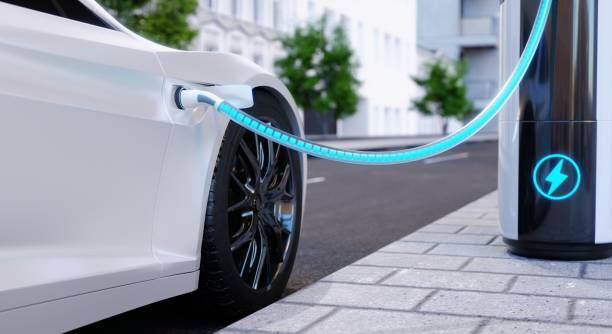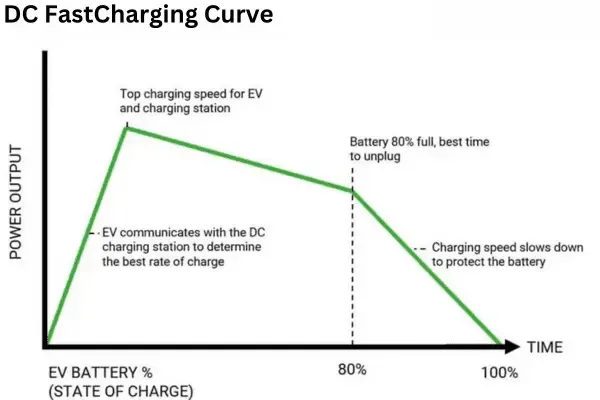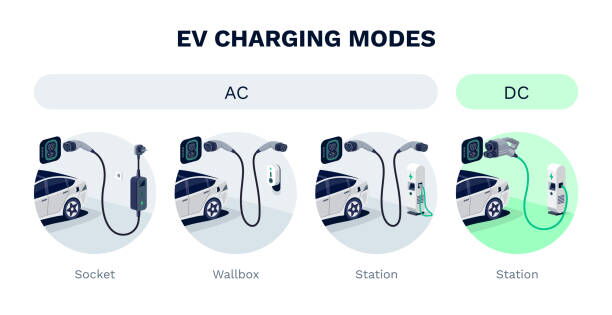As electric vehicles (EVs) become more prevalent, the need for efficient and convenient charging solutions grows. While Level 1 and Level 2 charging stations are suitable for everyday use, there are scenarios where these options may not suffice. This is where DC fast chargers come into play. These chargers deliver direct current (DC) power directly to an EV's battery, significantly reducing charging time. But when should you use DC fast charging, and how does it work? This article explores the nuances of DC fast charging, its optimal usage scenarios, and the factors influencing its performance.

DC fast charging is a technology that bypasses the onboard charger in an EV, delivering direct current (DC) power straight to the vehicle's battery. Unlike alternating current (AC) charging, which requires the EV’s onboard system to convert AC into DC, DC fast charging handles this conversion within the charging station itself.
DC fast charging relies on continuous communication between the electric vehicle (EV) and the charging station to regulate the power delivery based on the vehicle's needs. Key factors influencing charging speed include the DC charging curve, the vehicle’s acceptance rate, and the station’s power output.
The maximum output power of a DC fast charging station is measured in kilowatts (kW), often referred to as the charging rate. These stations typically range from 15 kW to 350 kW, with megawatt-level chargers (1,000 kW) currently in development.
While higher kW chargers generally provide faster charging, the actual speed depends on the EV’s acceptance rate—how much power the car’s battery can handle. Even with a high-power charger, the vehicle may not charge faster if its battery system cannot accept the full output.
The DC fast charging curve illustrates the power output an EV can accept as its battery charges. Initially, the vehicle rapidly reaches its peak charging rate, but as the battery fills, the rate gradually slows. At around 80% State of Charge (SOC), power drops sharply to protect the battery and ensure charger availability. Manufacturers recommend charging up to 80% for efficiency and battery health, as charging beyond this point is significantly slower.

The speed of DC fast charging depends on the charger's power output, measured in kilowatts (kW). Higher output chargers deliver faster charging times. The kW rating varies by charger type, manufacturer, and installation site, typically ranging from 15 kW to 350 kW.
Standalone DC fast chargers dedicate their full power to a single connected EV, ensuring maximum charging speed. In contrast, some chargers distribute power across multiple connectors, allowing several vehicles to charge simultaneously, albeit at reduced speeds per vehicle.
|
30 kW |
87 miles/hour |
|
50 kW |
145 miles/hour |
|
100 kW |
289 miles/hour |
| 120 kW |
347 miles/hour |
| 150 kW |
434 miles/hour |
| 180 kW |
520 miles/hour |
| 250 kW |
723 miles/hour |
| 350 kW |
1012 miles/hour |
Level 1 and Level 2 chargers, which use AC, are widely available because they rely on the same type of electricity as standard household outlets. This makes them convenient for charging at home or work, where EV owners can leave their cars plugged in for extended periods.
However, AC charging has its limitations, particularly in scenarios requiring rapid charging or when traveling long distances. DC fast chargers bridge this gap, providing a faster and more efficient way to replenish battery power.
While DC fast charging offers remarkable speed, it is not always the best choice for every charging scenario. Here are some guidelines on when to use it:
DC fast charging is most efficient when your EV's battery is within this range. Charging speeds slow down significantly as the SOC approaches 80% to protect the battery and prevent overcharging.
Frequent fast charging from a very low SOC can accelerate battery degradation. To prolong battery life, try to avoid starting a DC fast charge when the SOC is below 10%.
For road trips or situations where time is critical, DC fast chargers are invaluable. They allow EV drivers to quickly recharge and get back on the road without extended downtime.
When you’re running low on power and need a quick boost to reach your destination or the next charging station, DC fast charging is a practical solution.
Understanding the differences between AC and DC charging is crucial to making informed decisions about which option to use in different scenarios.

|
Feature |
AC Charging |
DC Fast Charging |
|
Power Type |
Alternating Current (AC) |
Direct Current (DC) |
|
Conversion |
Onboard charger converts AC to DC |
Conversion happens in the station |
|
Charging Speed |
Slower |
Faster |
|
Use Case |
Home or workplace charging |
Public charging station |
While DC fast charging is efficient, several factors can affect its performance and charging rate:
Each EV battery has a specific acceptance rate, measured in kilowatts (kW), dictating how quickly it can store energy. For instance, if a charging station offers 150 kW but the EV’s battery can only accept 100 kW, the charging speed will be capped at the battery's maximum capacity.
Many automakers are transitioning from 400V battery systems to 800V architectures to enable faster charging and higher acceptance rates.
Ambient temperatures can significantly impact charging efficiency. Extreme cold or heat may slow down the charging rate or, in some cases, prevent the battery from charging altogether.
Charging rates are typically highest when the battery has a low SOC and decrease as the battery approaches full capacity. This tapering helps avoid overcharging and potential damage to the battery.
Most DC fast charging stations currently offer maximum charge rates between 200A and 300A. While 500A stations are becoming more common, they are expensive to install and maintain.
The high currents involved in DC fast charging generate heat throughout the system, from the charger to the battery. Managing this heat is critical to maintaining charging performance and ensuring safety.
Standards like J1772 and IEC 62196 set a maximum operating temperature limit of 90°C at the interface between the charger and the EV to ensure touch-safe conditions. If temperatures approach this limit, the charging rate may be reduced to prevent overheating.
Although DC fast charging is a powerful tool, it’s not always the best choice:
Regular reliance on DC fast charging can contribute to battery wear and reduce its lifespan.
Fast charging is often more expensive than Level 1 or Level 2 charging.
Not all areas have abundant DC fast charging stations, particularly in rural locations.
Use apps or online maps to locate DC fast charging stations along your route.
Avoid overusing DC fast chargers to minimize stress on your battery.
Use AC charging for regular needs and reserve DC fast charging for specific scenarios like long trips or emergencies.
Ensure your EV supports the charging speeds offered by the station you plan to use.
With advancements in battery technology and charging infrastructure, DC fast charging is becoming more accessible and efficient. Emerging technologies, such as solid-state batteries, promise even faster charging times and improved energy density.
Governments and private entities are also investing heavily in expanding the DC fast charging network to support the growing EV market. This includes installing ultra-fast chargers capable of delivering up to 500 kW, reducing charging times to as little as 10–15 minutes.
DC fast charging is a game-changer for EV owners, offering unparalleled speed and convenience. While it is not a replacement for AC charging in everyday scenarios, it plays a crucial role in long-distance travel, emergency situations, and when time is of the essence.
By understanding the optimal use cases and factors affecting DC fast charging, EV drivers can maximize its benefits while preserving their battery’s health. As infrastructure continues to evolve, DC fast charging will undoubtedly become an even more integral part of the EV ecosystem, paving the way for a more sustainable and electrified future.